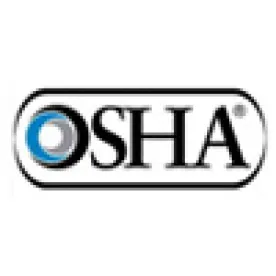On March 5, 2015, the Occupational Health and Safety Administration (“OSHA”) issued its “Final Rule” establishing the procedures for handling retaliation complaints brought under Section 806 of the Sarbanes-Oxley Act (“SOX”). Section 806, as amended by Dodd-Frank, protects employees of publicly traded companies, as well as employees of contractors, subcontractors, and agents of publicly traded companies, from being retaliated against for reporting fraudulent activity or other violations of SEC rules and regulations. The Final Rule addresses the comments that OSHA received in response to its interim rule, issued in 2011, and sets forth the final procedures for retaliation claims under SOX, including the procedures and timeframes applicable to employee complaints and OSHA investigations. While the Final Rule does not differ substantively from the interim rule, it crystalizes the SOX whistleblower complaint procedures and reflects an increasingly whistleblower-friendly landscape.
Verbal Complaints
One of the most important aspects of the Final Rule—and a subject of considerable concern to commenters—is its adherence to the interim rule provision permitting verbal SOX complaints. Prior to the interim rule, complaints had to be in writing and include a full statement of the alleged wrongful acts or omissions. The interim rule eliminated this requirement and permitted complaints to be made verbally and reduced to writing by an OSHA investigator. Commenters argued that this procedure transforms the investigator into an advocate for the complainant, lacks any standard for the investigator’s written complaint, and increases the risk that the complainant may attempt to change his or her allegations by contending that the claims were not accurately recorded by the investigator. OSHA rejected these arguments, concluding that allowing verbal complaints is “[c]onsistent with OSHA’s procedural rules under other whistleblower statues.”
Preliminary Reinstatement
The Final Rule also adopted the interim rule’s provision on preliminary reinstatement, i.e., reinstating the complainant to his or her former position during the pendency of a dispute. Commenters had suggested—without success—that OSHA include a provision that preliminary reinstatement should not be granted if the complainant is a security risk and that OSHA articulate specific circumstances under which preliminary reinstatement is appropriate. Instead, the Final Rule provides that, if there is a reasonable basis to believe that a SOX violation has occurred, a preliminary order will be issued that provides the relief necessary to make the complainant whole, including reinstatement to the position that he or she would have had but for the retaliation.
Moreover, as an alternative to actual reinstatement, the Final Rule permits OSHA to order preliminary “economic reinstatement” during the pendency of a dispute, which allows the complainant to collect his or her same pay and benefits without having to return to work. Significantly, OSHA intentionally omitted any mechanism for employers to recover the costs of preliminary economic reinstatement if the complainant is ultimately unsuccessful on his or her claim.
Notice to Respondents
One helpful development for employers is OSHA’s decision to clarify in its Final Rule the notice that respondents must receive when a complaint is filed, as well as respondents’ right to receive the information that the complainant submits to OSHA during an investigation. The Final Rule expressly provides that, when a complaint is filed, OSHA must notify the respondent of the filing of the complaint, the allegations made, and the substance of the supporting evidence. The Final Rule also notes that OSHA “generally provides the respondent with a copy of its memorandum memorializing the complaint” and that the respondent can “request that OSHA clarify the allegations in the complaint if necessary.” In addition, the Final Rule makes clear that, during an investigation, OSHA will ensure that each party receives a copy of all of the other parties’ submissions to OSHA and is given an adequate opportunity to respond to those submissions.
In the light of these generally supportive and encouraging procedures for whistleblowers, it is more important than ever for employers to correctly identify, investigate thoroughly, and take appropriate steps to address internal whistleblower complaints before they become costly, full-blown whistleblower disputes.




 />i
/>i
